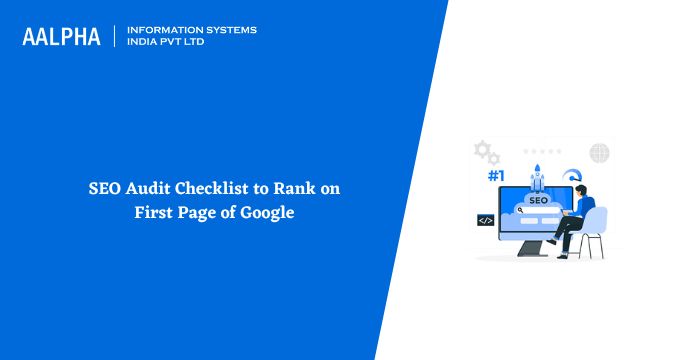Before we begin the SEO audit process, there are a few tools that you should try to make this process as efficient as possible. Is it mandatory that they do an SEO analysis of your website? Not required, but they will greatly facilitate and improve the process. Not to mention that they are (for the most part) free, which makes each one worthy of a closer look.
SEO Audit Checklist
#1 Determine the role of SEO in your overall marketing strategy.
SEO/SEM is no longer the end-all, be-all digital marketing. Thus you cannot expect SEO to achieve everything if you invest 30 percent of your time and resources. Before doing an SEO audit, you must thus determine what activities you want to motivate with your SEO strategy.
Once you know which portion of the sales funnel your SEO will assist, you can develop an SEO plan that works for your business, and everything afterwards becomes much simpler. You will be able to analyze the performance of your content based on relevant data, identify content gaps, and finish this audit in a focused manner that yields tangible benefits. If you offer a very particular service or product, such as roofing services or materials, look for specialized roofing SEO agencies that will create a strategy for you.
For SaaS businesses, SaaS link building is a smart way to boost SEO. It helps improve search rankings and brings in targeted traffic by getting quality backlinks from trusted SaaS websites.
The SEO approach of Zapier, which receives over 6 million monthly visitors, is an excellent example of a commitment to a certain phase of the buyer’s journey.
They do this by realizing that their SEO objective is to increase brand recognition and discovery via TOFU content. The bulk of their 25,000 landing pages are devoted to displaying consumers who are seeking connections between two software programs how Zapier may assist them.
#2 Conduct a Website Crawl and Correct Technical Errors
Even in 2022, core technical SEO errors are more prevalent than you’d like, and scanning your website is one certain method to identify them.
There are several free and commercial website crawling programs available. We suggest beginning your SEO audit using Screaming Frog’s SEO Spider (it’s free for the first 500 URLs and costs £149 per year).
After registering for an account, you must choose your crawl setup. You must arrange your crawler to act like the targeted search engine (Googlebot, Bingbot, etc.). In Screaming Frog, you can pick your user agent by choosing configuration and selecting user agent (only available in the paid version).
Next, you must determine the behaviour of the spider. You may choose “spider” from the Screaming Frog setup menu. Then, you must pick whether you want the spider to examine images, CSS, JavaScript, Canonicals, or several other possibilities.
#3 Eliminate Excess and Substandard Content
Although it appears contradictory, Google has said that posting frequency and content volume are not ranking factors.
Not just smoke and mirrors, either. In recent years, websites have improved their search engine ranks by deleting thousands of pages from search results. This method, also known as Content Pruning, may result in substantial traffic gains of up to 44 percent.
Like regular pruning, Content Pruning is a method for maximizing outcomes by removing the unneeded. Remove sites with little function and do not appropriately respond to Google search queries.
While you should consider eliminating bad sites identified by the SEO tool in the previous step, SEO tools often miss most problem pages. Therefore, you must do manual searches.
#4 Assess Page Speed and Load Times
Since Google now includes page speed as an official ranking criterion, optimizing your website load times is one of the greatest SEO techniques. Utilizing a service such as Google PageSpeed Insights is a straightforward method for determining your website’s loading speed.
Installation of a cache plugin (for sluggish WordPress installations), reducing video and picture assets, and installing Lazy Loading scripts may be as easy and inexpensive as shifting servers. Choose your fights wisely, concentrating on easy victories on your most critical sites to get maximum effect with little effort.
#5 Test Your Mobile-Friendliness
Fixing mobile-friendliness problems should be one of your top objectives. With Google’s change to Search Console, it is quite simple to determine if your website is mobile-friendly. Sign in to your Search Console account and click “Mobile Usability” on the sidebar.
Google displays from this website which of your sites have mobile-friendliness issues. Follow the link to learn the issue, how to remedy it, and how to validate the change so that Google can verify that your site has improved.
Unless you use an outdated WordPress theme and installation, your scores should be satisfactory. If they are not and you lack the knowledge to resolve the problem, you should contact a developer for assistance.
After correcting these problems, you should verify them yourself. Check Google to check whether your top landing pages load quickly on your phone, tablet, or other mobile devices. This may also assist you in determining if there are any changes you can make to these landing pages to increase their conversion rates.
Wrapping Up
Regularly reviewing your SEO audit checklist will allow you to keep up with your SEO efforts and identify issues as soon as they occur.
You may concentrate on various elements in SEO, including keyword density, meta and alt tags, word length, and anything else that sounds nice. However, focusing excessively on these particulars might cause you to lose sight of the bigger picture.
If you are looking for SEO audit, look no further connect with SEO company in India.
Also read : Angular SEO




Share This Article:
Written by:
Muzammil K
Muzammil K is the Marketing Manager at Aalpha Information Systems, where he leads marketing efforts to drive business growth. With a passion for marketing strategy and a commitment to results, he's dedicated to helping the company succeed in the ever-changing digital landscape.
Muzammil K is the Marketing Manager at Aalpha Information Systems, where he leads marketing efforts to drive business growth. With a passion for marketing strategy and a commitment to results, he's dedicated to helping the company succeed in the ever-changing digital landscape.